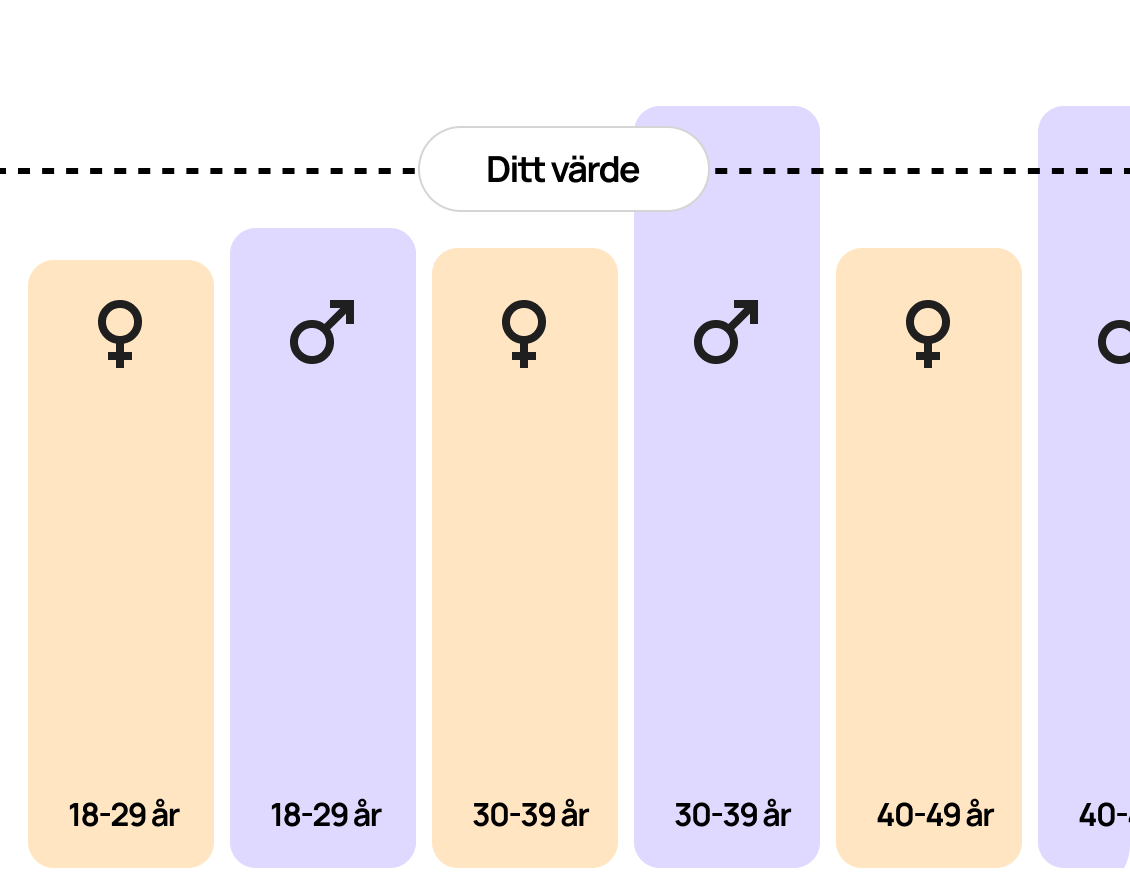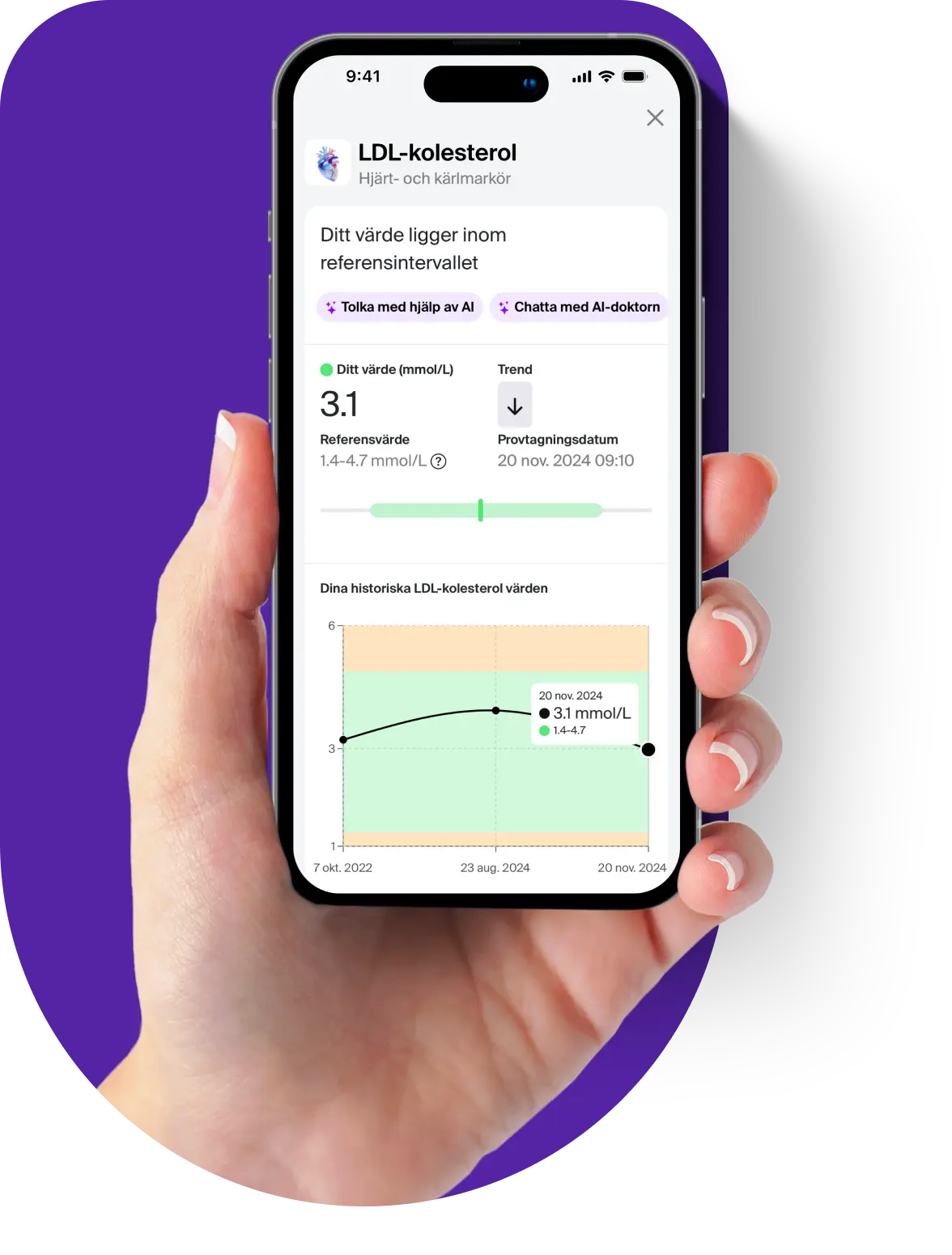Blood test for lactose intolerance – Analysis of the B-lactase gene genotype
Do you suspect that you have lactose intolerance? Do you experience bloating, gas, diarrhea or stomach discomfort after eating dairy products? With the lactose intolerance test genotype B, you can find out if you have lactose intolerance and whether it is genetically determined.
What does the lactose intolerance test show?
The blood test analyzes your genetic makeup of the lactase gene (LCT-13910 C/T) to determine whether you have a hereditary predisposition to primary lactose intolerance. The result shows which genotype you have:
- C/C (homozygous) – Linked to primary lactose intolerance, where lactase production decreases in adulthood.
- C/T (heterozygous) – Usually normal lactase tolerance, but some may experience mild symptoms.
- T/T (homozygous) – Preserved lactase production, which means you can break down lactose without problems.
This blood test is suitable for those who suspect lactose intolerance.
- Do you experience stomach problems after dairy products and want to understand if it is due to lactose intolerance.
- Are you looking for a reliable genetic analysis that can provide answers without having to undergo dietary experiments.
- Want to distinguish genetic lactose intolerance from other gastrointestinal problems, such as IBS or celiac disease.
Interpretation of test results for lactose intolerance
The B-Lactase gene genotype blood test analyzes genetic variants of LCT-13910 C/T to determine whether a person has a genetic predisposition for primary lactose intolerance. The result provides information about the ability to break down lactose and can guide when lactose intolerance is suspected.
Genotype and interpretation
- LCT-13910 T/T (homozygous) Maintained lactase production
- You can normally break down lactose both during childhood and in adulthood.
- No increased risk of lactose intolerance.
- LCT-13910 C/T (heterozygous) Maintained lactase production, but some sensitivity may occur
- Most individuals can still break down lactose without problems.
- A few people may experience milder symptoms of lactose intolerance, especially in adulthood.
- LCT-13910 C/C (homozygous) Primary lactose intolerance (adult hypolactasia)
- Lactase production is gradually reduced from childhood.
- In adulthood, the patient is usually unable to break down lactose, which can lead to gas formation, bloating, diarrhea and stomach discomfort after consuming dairy products.
- The severity of the symptoms depends on the lactose intake, intestinal mucosal health and individual sensitivity.
Important things to know when investigating lactose intolerance
The test can detect primary lactose intolerance, but it doesn't rule out secondary lactose intolerance, which can be caused by, for example, celiac disease or intestinal infections. In case of uncertainty, additional tests, such as elimination and provocation, can be a good complement.
The blood test provides a safe and reliable genetic analysis to determine primary lactose intolerance, but should always be interpreted in combination with symptoms and other clinical factors.
































